- The paper demonstrates that autonomous radio detection of UHE particles is feasible, achieving 100% trigger efficiency up to 1434 Hz in the GP300 prototype.
- Methodological innovations include optimized antenna design, FPGA-based triggering, and comprehensive calibration using spectral analysis of environmental radio noise.
- Results validate the scalability of GRAND with consistent performance across diverse RFI conditions, highlighting its potential for multi-messenger astrophysics.
Technical Summary of "Towards the Giant Radio Array for Neutrino Detection (GRAND): the GRANDProto300 and GRAND@Auger prototypes"
Introduction and Scientific Motivation
The paper presents the design, deployment, and initial results from the GRANDProto300 and GRAND@Auger prototype arrays, which are foundational steps toward the full-scale Giant Radio Array for Neutrino Detection (GRAND). GRAND is conceived as a multi-messenger observatory targeting ultra-high-energy (UHE) cosmic rays, neutrinos, and gamma rays, with the principal aim of elucidating the origin of UHE cosmic rays via detection of air showers and their secondary products. The detection strategy leverages large-scale arrays of radio antennas to capture the radio emission from extensive air showers (EAS) initiated by UHE particles in the atmosphere.
Prototype Array Deployment and Layout
Three prototype arrays were deployed in 2023: GRAND@Nançay (France), GRANDProto300 (China), and GRAND@Auger (Argentina). The focus of the paper is on the two larger arrays, GRANDProto300 and GRAND@Auger, which serve distinct roles: autonomous radio-detection validation (GP300) and coincident detection with the Pierre Auger Observatory (G@A).
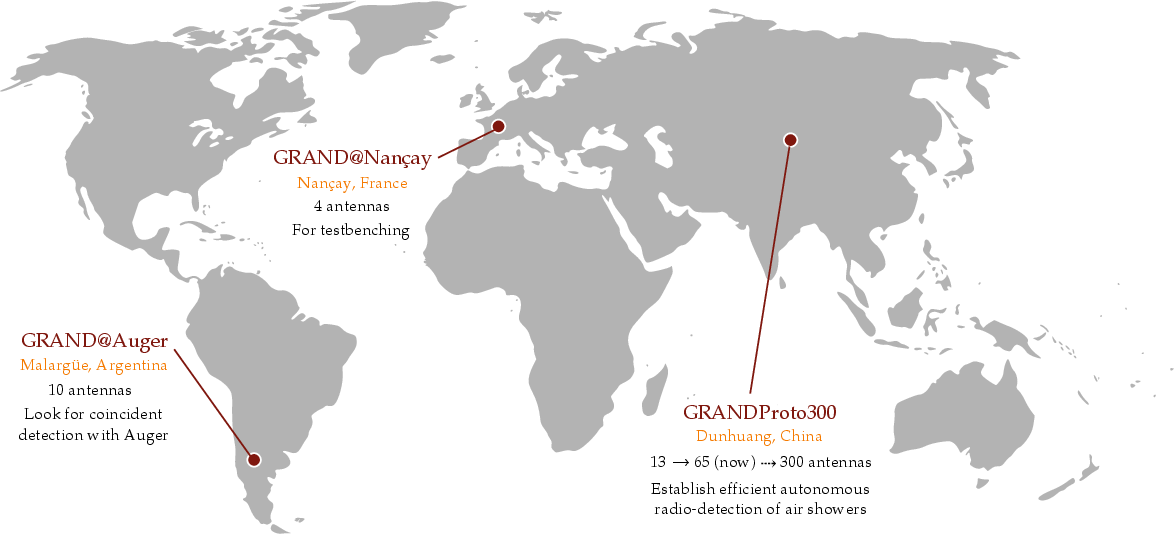
Figure 1: Geographic distribution of the three GRAND prototype arrays, each adapted to local environmental and technical constraints.
GRANDProto300 is situated in the Gobi Desert, exploiting a radio-quiet environment and proximity to a mountain range for enhanced neutrino sensitivity. The array is staged, with the current deployment comprising 65 antennas arranged hexagonally to optimize EAS detection efficiency and minimize reconstruction bias due to array symmetry.
GRAND@Auger repurposes 10 AERA stations within the Pierre Auger Observatory, enabling cross-validation of radio-detected air showers with established particle and fluorescence detectors. The denser layout (250 m spacing) facilitates detection of lower-energy and less-inclined showers.
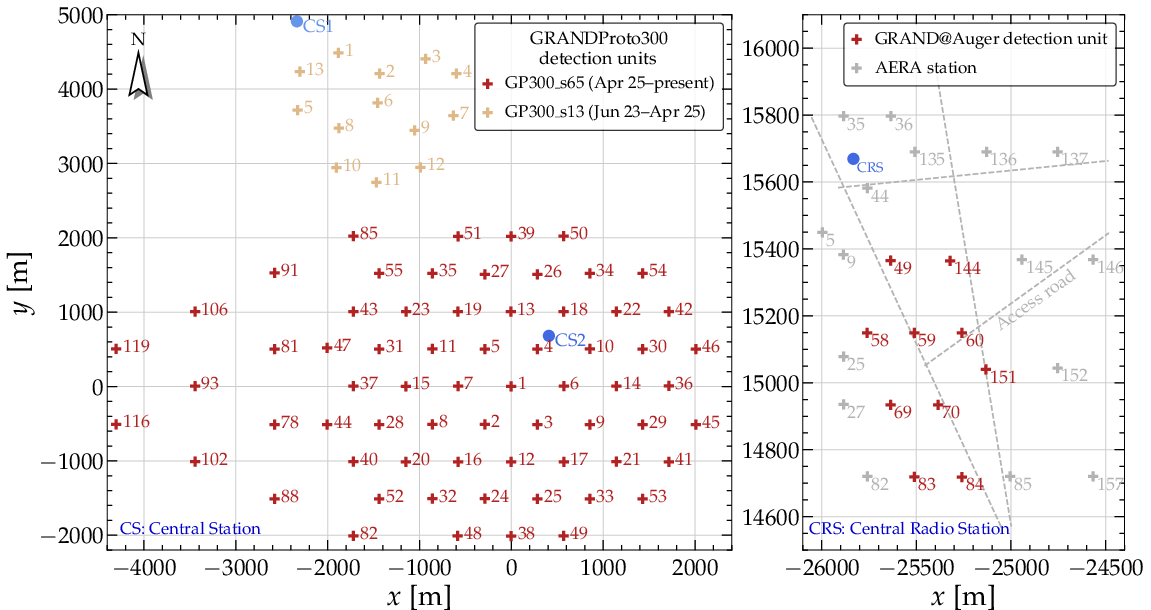
Figure 2: Array layouts for GRANDProto300 (left) and GRAND@Auger (right), illustrating hexagonal configurations and central DAQ stations.
Detection Unit Architecture
Each GRAND detection unit (DU) comprises a mechanically robust antenna system (the HorizonAntenna), low-noise amplifiers (LNAs), a front-end board (FEB), solar power supply, and wireless communications. The antenna is optimized for near-horizontal EAS, with three polarization channels (NS, EW, vertical) and a modular design for site-specific adaptation.
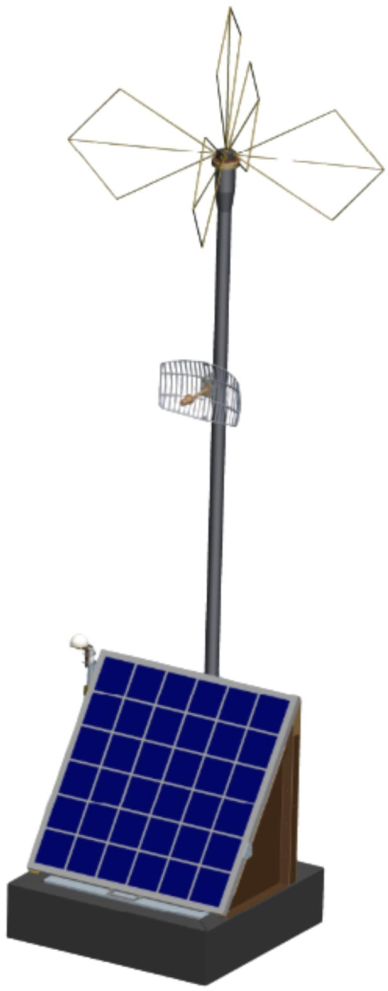
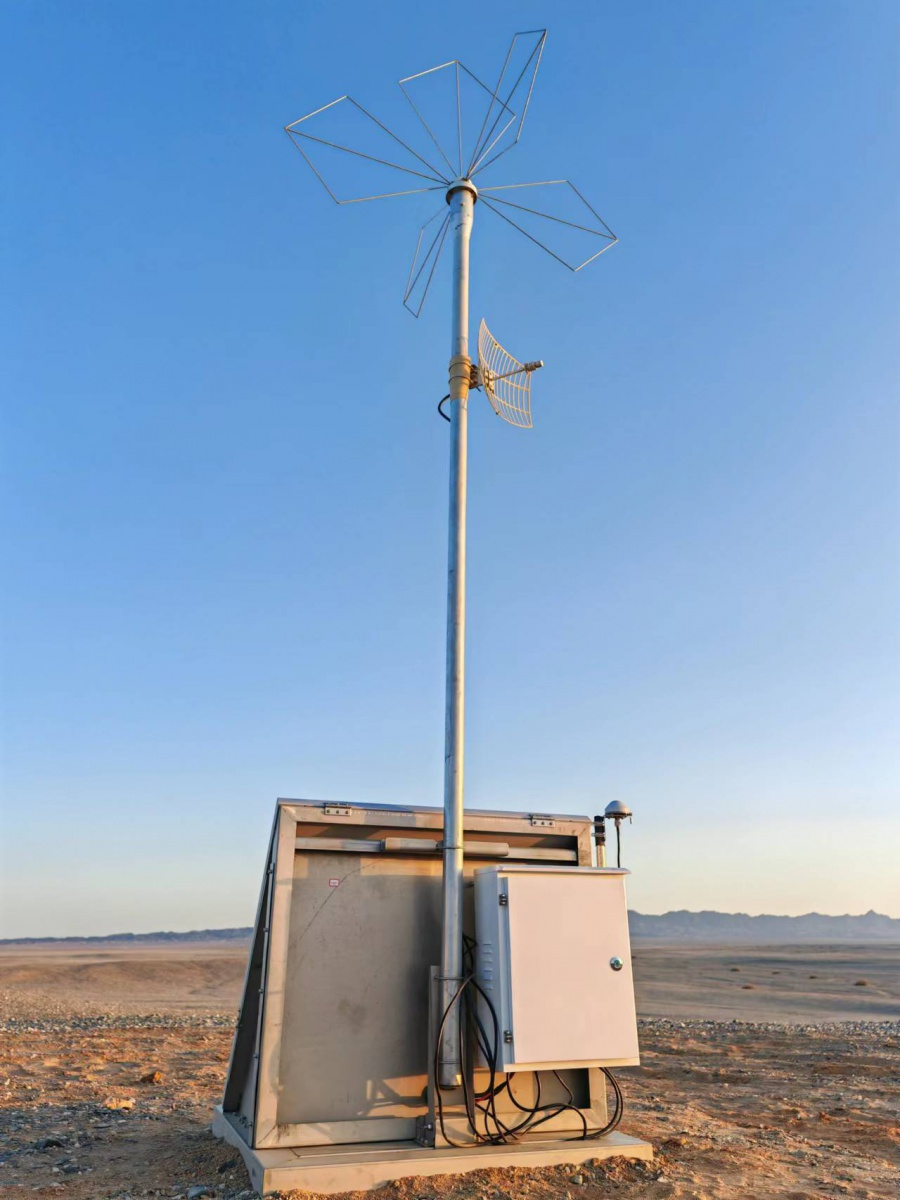
Figure 3: Mechanical structure of a GRANDProto300 detection unit, highlighting antenna mounting, solar power integration, and electronics enclosure.

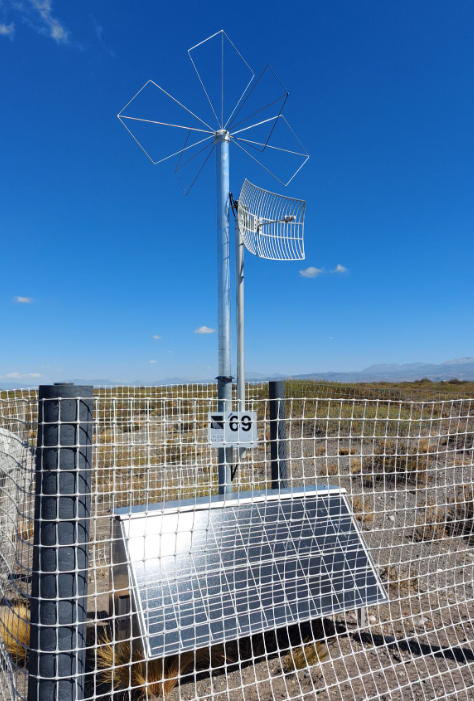
Figure 4: Modified AERA station serving as a GRAND@Auger detection unit, with increased antenna height and environmental protections.
The antenna response is characterized by its vector effective length (VEL), group delay, and gain, all simulated with full mechanical modeling and validated against laboratory measurements.
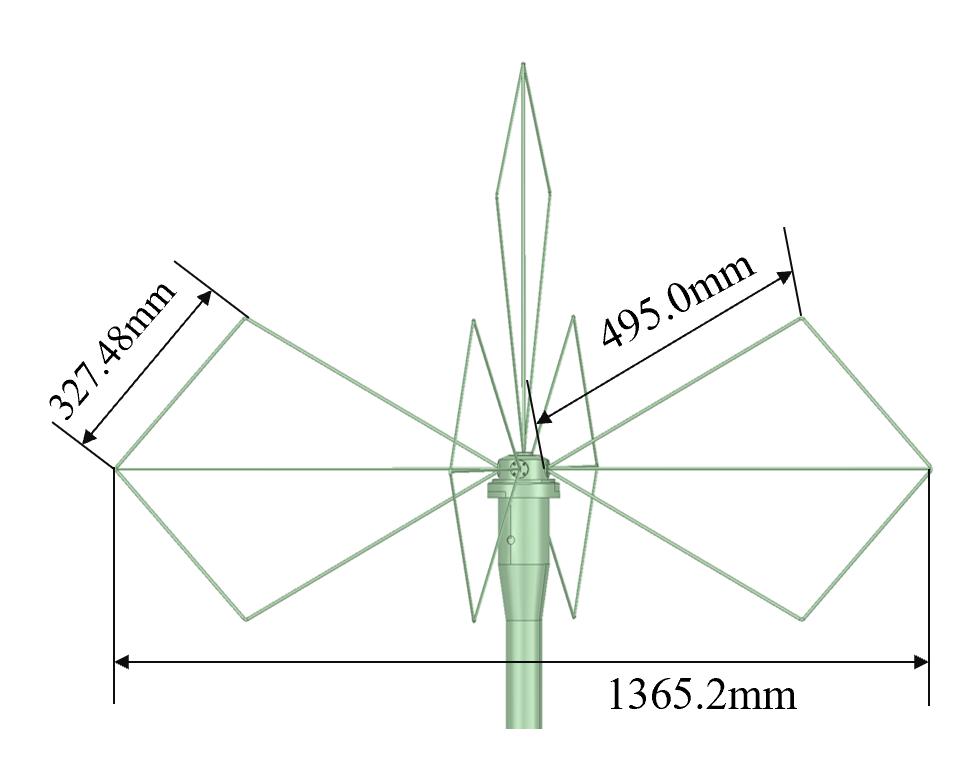
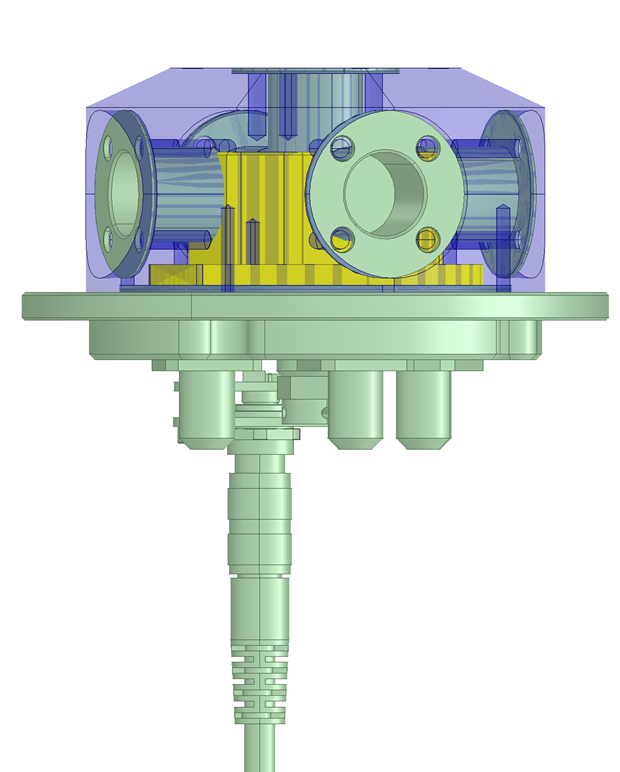
Figure 5: Schematic of the HorizonAntenna and nut assembly, showing polarization arms and LNA integration.
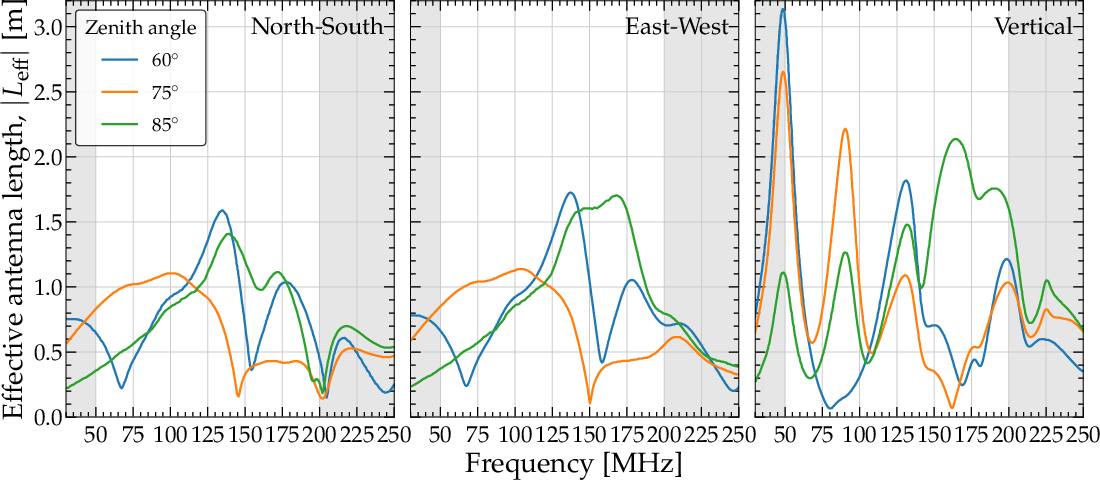
Figure 6: Simulated VEL for the three antenna arms as a function of frequency and incident angle, critical for accurate EAS signal reconstruction.
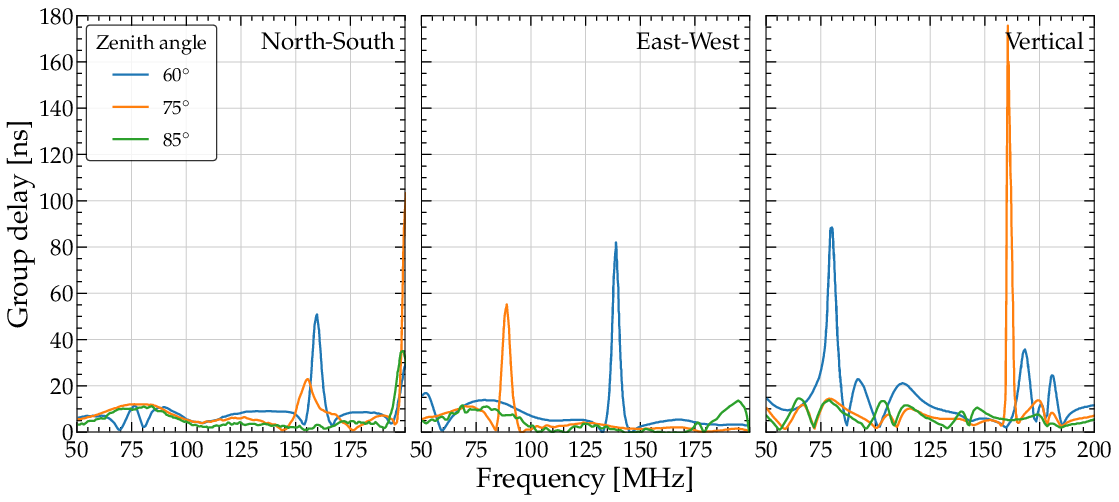
Figure 7: Simulated group delay, demonstrating minimal signal dispersion across the working frequency band.
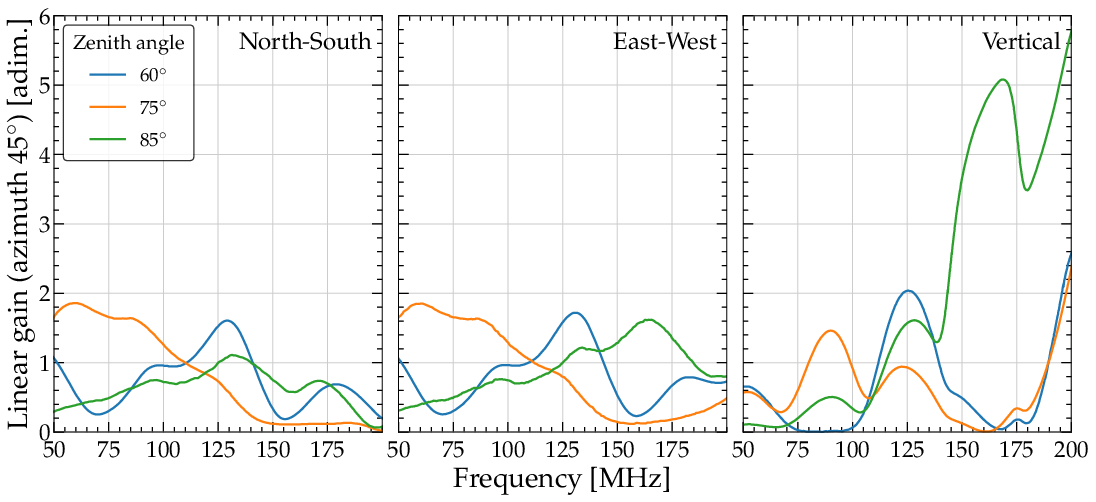
Figure 8: Simulated linear gain, indicating directional sensitivity and frequency dependence for each polarization channel.
LNAs are tailored for each site: GP300 prioritizes uniform matching and 20 dB gain, while G@A employs higher gain (30 dB) and enhanced moisture protection due to local environmental challenges.
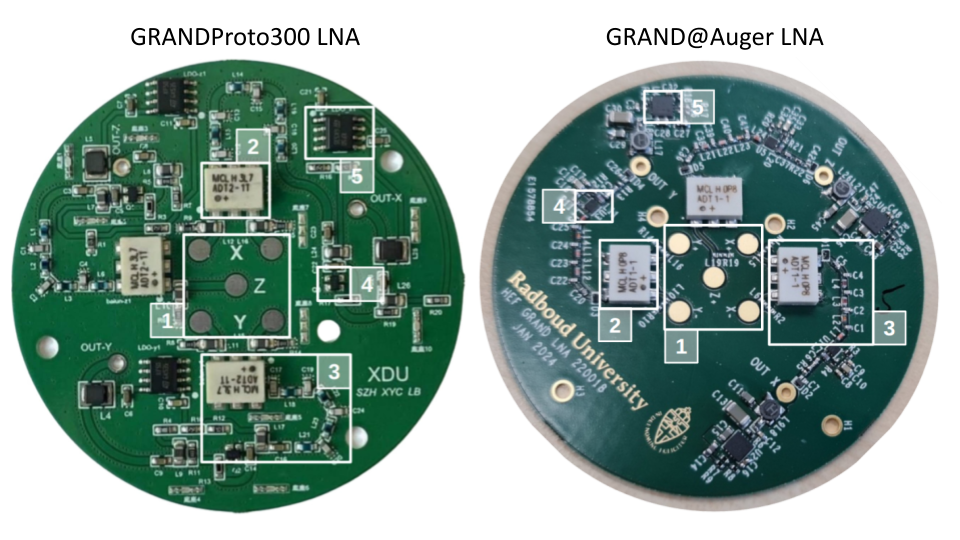
Figure 9: LNA board designs for GP300 (left) and G@A (right), with distinct matching networks and gain profiles.
The FEB digitizes signals at 500 MSPS with 14-bit resolution, incorporates FPGA-based triggering, and supports dynamic baseline subtraction and digital filtering. The analog chain is validated to provide flat amplification within the 50–200 MHz band.
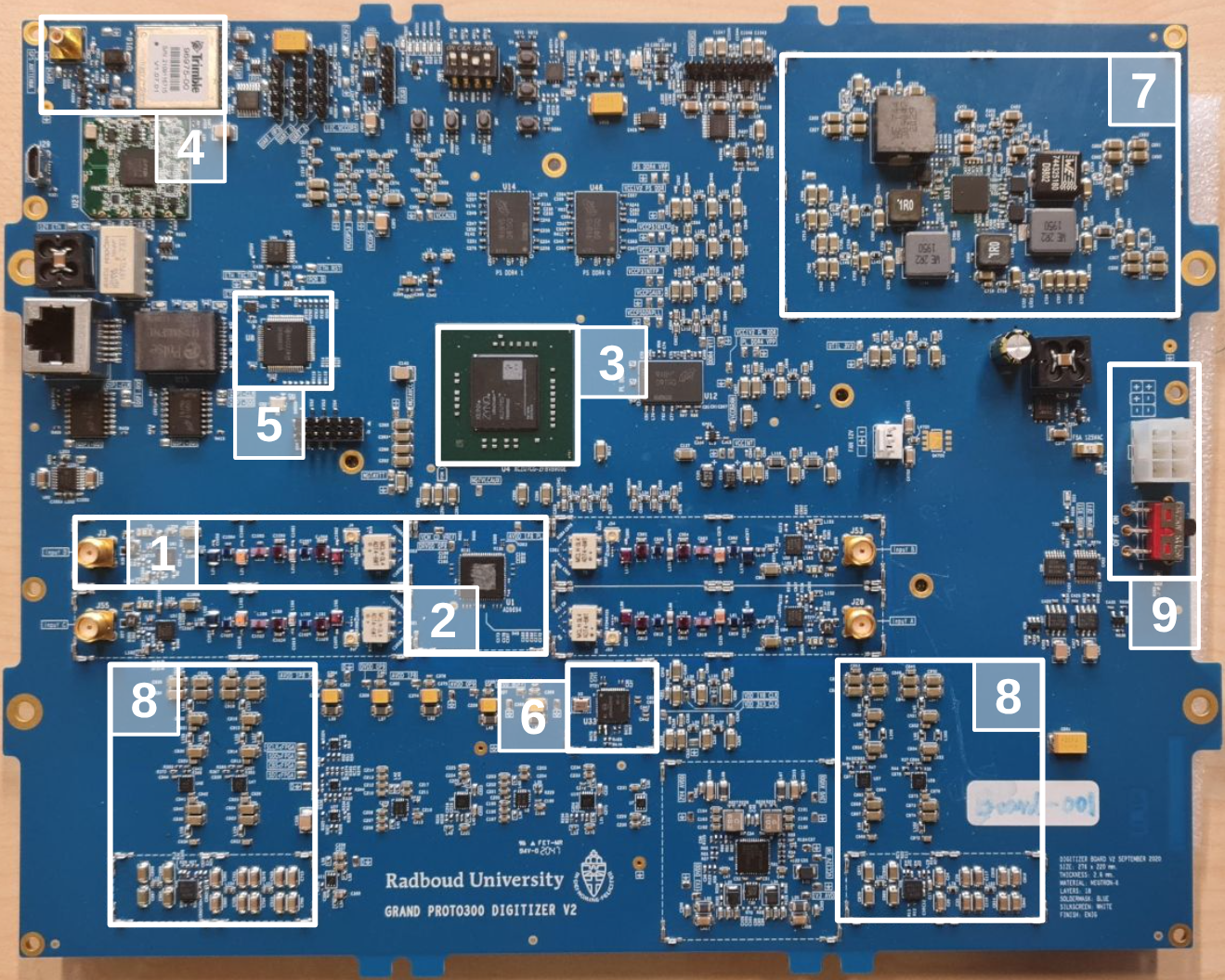
Figure 10: GRAND FEB architecture, detailing signal processing, digitization, timing, and communications subsystems.
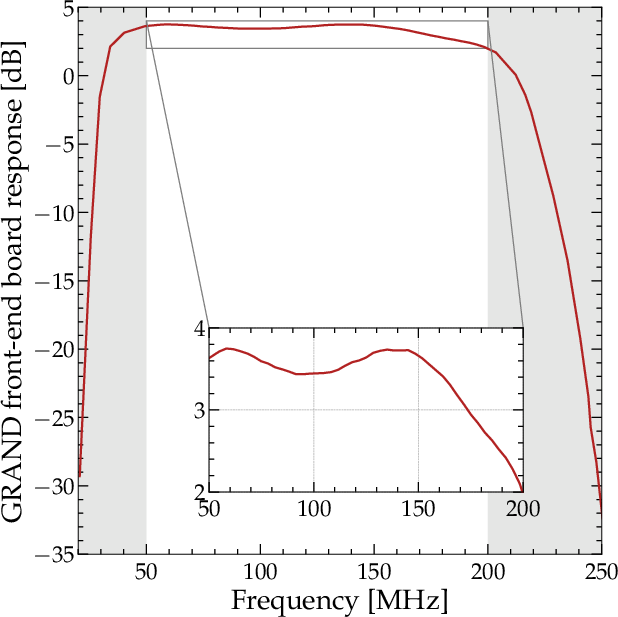
Figure 11: Measured analog filter response, confirming consistent amplification across the operational frequency range.
System-level performance is simulated via GRANDlib, which models the RF chain using measured S-parameters for each array configuration.
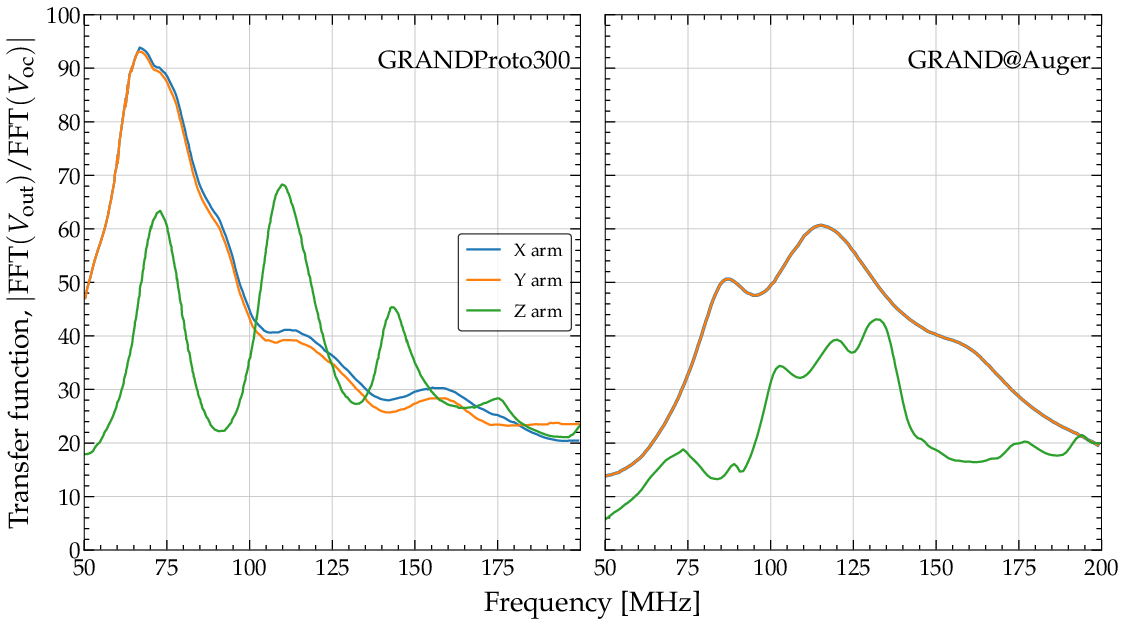
Figure 12: Simulated transfer functions for GP300 and G@A detection units, reflecting differences in LNA and FEB configurations.
Triggering and Data Acquisition
The self-trigger algorithm is implemented in FPGA firmware, designed to discriminate EAS-like transients from anthropogenic noise using configurable thresholds and time windows. The system achieves 100% trigger efficiency up to 1434 Hz for GP300, with similar performance at G@A despite higher RFI.
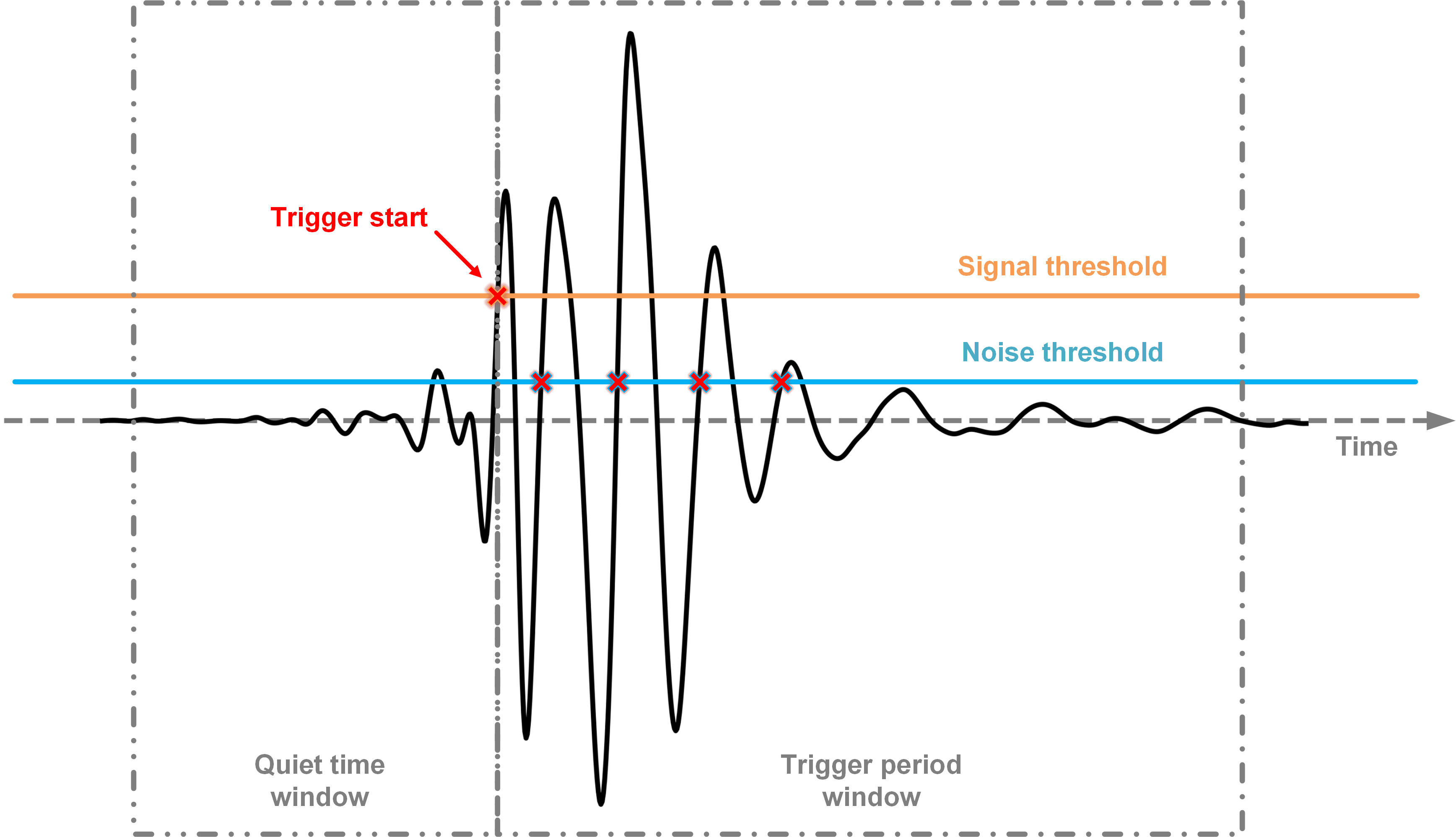
Figure 13: Flowchart of the local trigger algorithm, illustrating thresholding and time window logic for transient selection.
Data acquisition is managed via a two-tiered DAQ system: local buffering at each DU and centralized event building at the array's central station. Events are classified as coincident (CD), unit (UD), or monitoring (MD), with automated data transfer and conversion to GRANDRoot format for analysis.
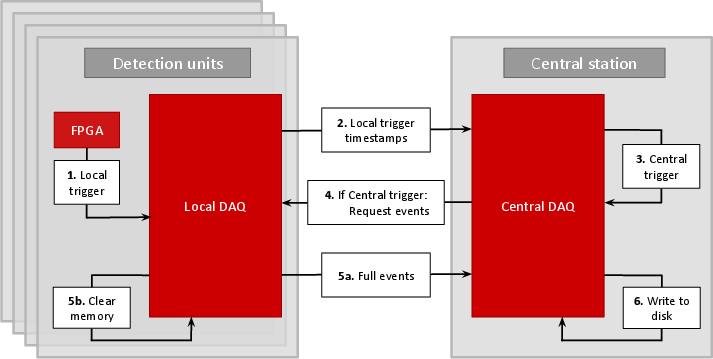
Figure 14: DAQ flow diagram, showing event buffering, central trigger decision, and data transfer pipeline.
Data Quality and Environmental Characterization
Continuous monitoring of system parameters (battery, temperature, trigger rate) and unbiased data acquisition enable robust data quality assurance. Spectral analysis of unbiased triggers provides detailed characterization of local radio backgrounds and system response.
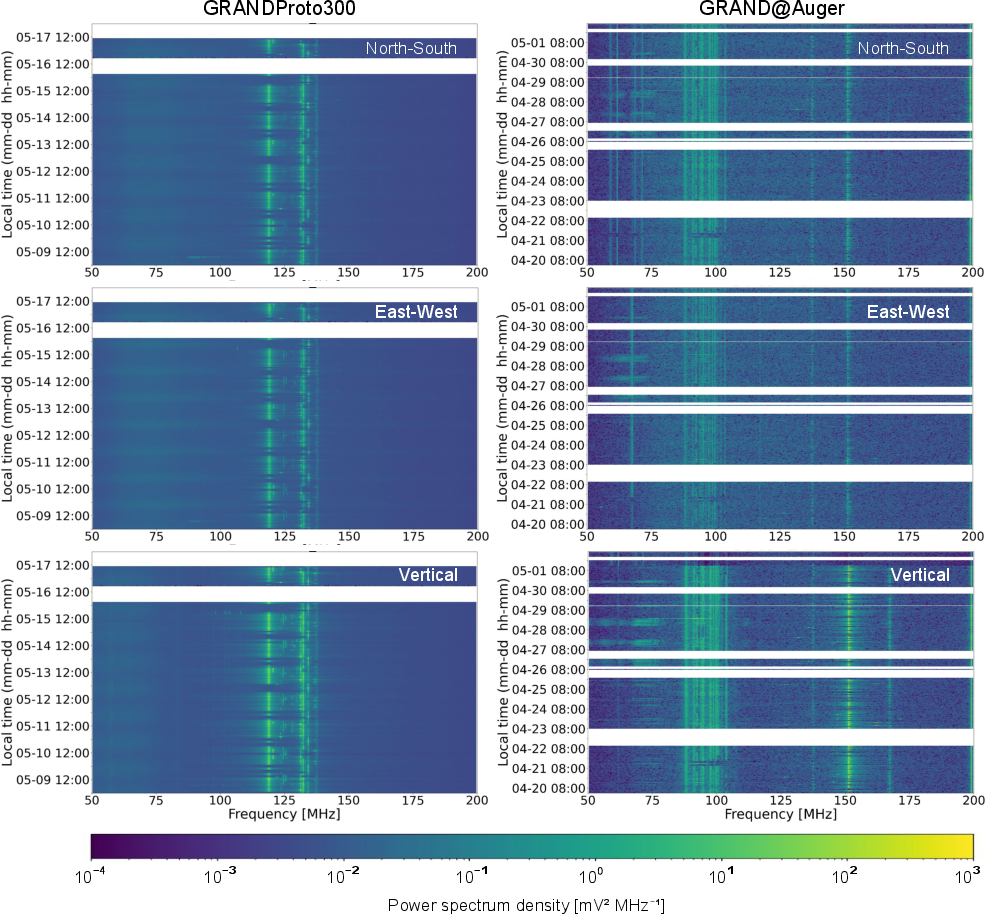
Figure 15: Spectrograms for GP300 and G@A DUs, showing polarization-dependent background features and operational hibernation periods.
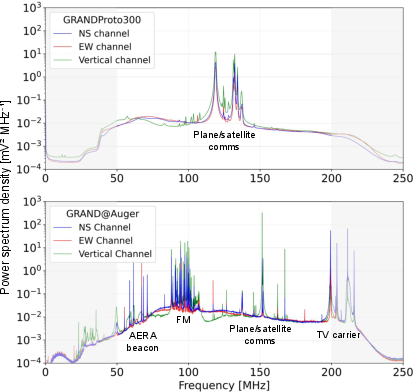
Figure 16: Time-averaged power spectrum densities, with identification of anthropogenic and natural radio sources across the frequency band.
The GP300 site exhibits minimal RFI except for aeronautical bands, while G@A is subject to persistent narrowband interference from local infrastructure and satellite communications. Despite these differences, the baseline PSD levels are consistent across arrays, validating the robustness of the DU design.
Implications and Future Directions
The prototypes demonstrate that autonomous, large-scale radio detection of EAS is feasible under diverse environmental and RFI conditions. The hardware and software modularity allows for site-specific optimization without compromising cross-array calibration or data integrity. The successful operation and consistent performance of the DUs across sites support the scalability of GRAND to arrays of 10,000+ antennas, distributed globally for full-sky coverage.
The initial detection of cosmic-ray candidates in GP300 and coincident events in G@A with the Pierre Auger Observatory substantiate the detection principle and pave the way for future autonomous neutrino searches. Ongoing calibration using Galactic radio emission and further refinement of trigger algorithms will enhance detection efficiency and background rejection.
Conclusion
The deployment and operation of GRANDProto300 and GRAND@Auger prototypes establish the technical and scientific foundation for the full-scale GRAND observatory. The demonstrated resilience of the detection units, validated triggering and DAQ systems, and comprehensive environmental characterization confirm the viability of autonomous radio detection of UHE particles. These results have direct implications for the design and deployment of next-generation multi-messenger observatories, and the modular, scalable approach adopted by GRAND is well-positioned to address the challenges of global, high-statistics UHE particle detection.




















